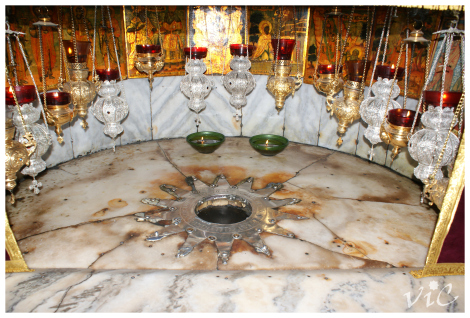
SONY DSC
Għeżież, ejjew f’dan iż-żmien nkunu konxji li t-twelid ta’ Ġesù mhux sempliċement twelid ta’ bniedem. Ġesù huwa Alla nnifsu. Alla li hu magħna. Huwa magħna dejjem u mhux biss f’xi żmien partikolari. Għalhekk inħabirku biex il-preżenza ta’ Ġesù Alla, li sar bniedem reali, inħalluha tkun preżenti magħna dejjem. Ma jagħmilx sens li niċċelebraw it-twelid ta’ Ġesù mbagħad inqisuh ineżistenti fil-kumplament tal-ġranet matul is-sena. Ġesù għandu jkun il-mira għaċ-ċelebrazzjoni ta’ ferħ kuljum għax huwa proprju minħabba fih li l-midneb jista’ jsib il-ħelsien mid-dnub u mir-riżultat l-aktar gravi tad-dnub, ċoè, il-mewt eterna.
RE PHOTO:
Basilica of the Nativity in Bethlehem
The Church of the Nativity in Bethlehem is one of the oldest continuously operating churches in the world, and the oldest in the Holy Land (founded in 325). The structure in a style of a cross is built over the cave that tradition marks as the birthplace of Jesus Christ. The building was founded by the Queen Helen of the Byzantine Empire.
The main Basilica of the Nativity is maintained by the Greek Orthodox Patriarchate of Jerusalem. It is designed like a typical Roman basilica, with five aisles and an apse (a room in a shape of a semicircle) in the eastern end, where is placed the sanctuary.
The walls of the church are covered with ancient mosaics, sadly mainly damaged. The basilica can be entered through a very low door, called the “Door of Humility”. The original mosaic Roman style floor is covered over, but part of it can be seen through the trap door in the modern floor. Next to the altar there is a large gilded iconostasis and a big number of decorative lamps throughout the entire building.
The Grotto of the Nativity, beneath which is the star marking the spot where tradition says the Virgin Mary gave birth to Jesus.

0 Comments